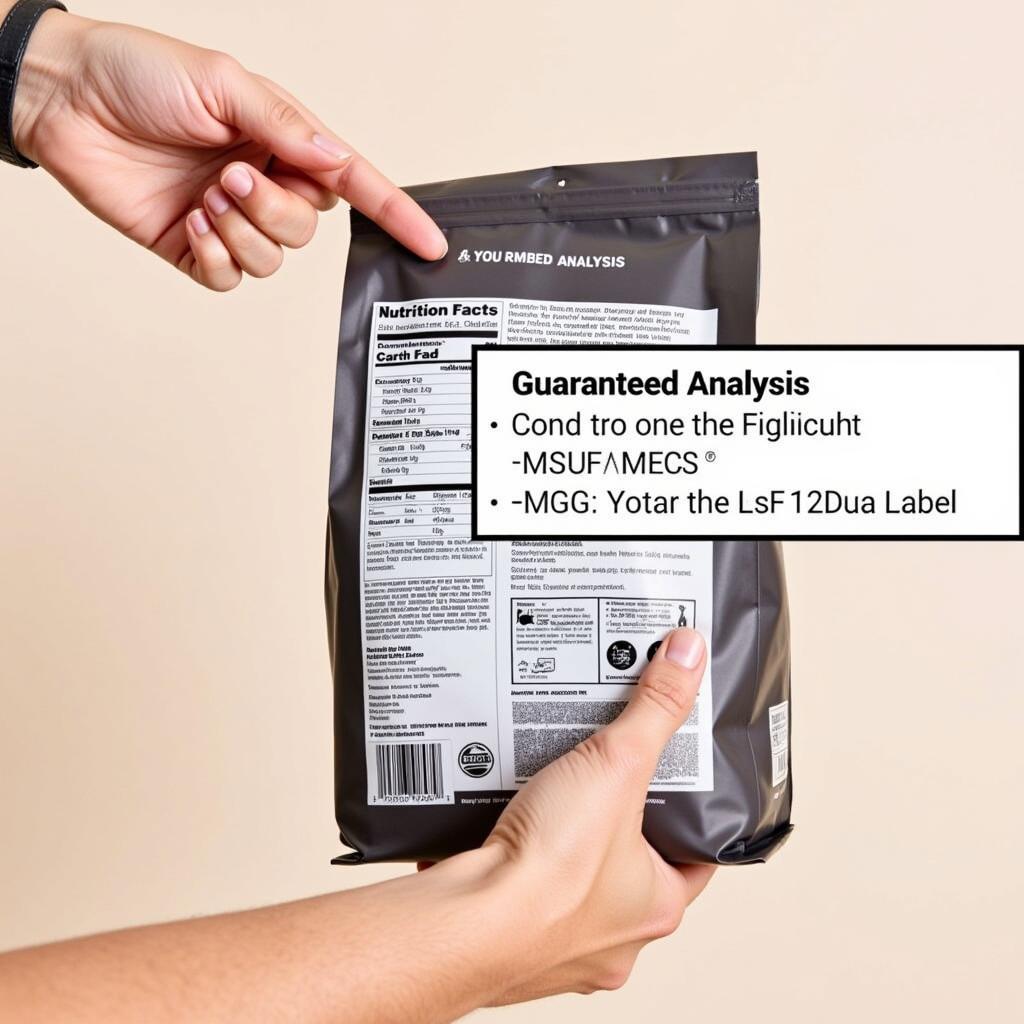Ash In Dog Food is a topic that often sparks curiosity and sometimes concern among pet owners. What exactly is it, and what does it mean for your furry friend’s health? This article dives deep into the subject of ash content in dog food, exploring its significance, potential benefits and drawbacks, and how to interpret it on pet food labels.  Analyzing Ash Content in Dog Food
Analyzing Ash Content in Dog Food
Decoding the Meaning of “Ash” in Dog Food
Contrary to the image of fireplace remnants, “ash” in dog food doesn’t refer to burnt material. It represents the inorganic mineral content remaining after the organic matter (protein, fat, carbohydrates, fiber) is incinerated in a laboratory. These minerals, while essential for a dog’s health, must be present in appropriate amounts. Too much or too little can have implications for your pet’s overall well-being.
Essential Minerals Found in Dog Food Ash
Ash itself isn’t a single nutrient but rather a collective term. This mineral content includes crucial elements like calcium, phosphorus, magnesium, potassium, sodium, zinc, iron, and copper. These minerals play vital roles in various bodily functions, including bone development, muscle function, nerve transmission, and maintaining fluid balance.
Imagine building a house. The bricks and wood are like the organic components of dog food, providing energy and building blocks. The ash content, the minerals, are the cement and steel, holding everything together and ensuring structural integrity. Just like a house needs the right balance of materials, your dog needs the correct proportion of minerals for optimal health.
Is High Ash Content in Dog Food Bad?
Not necessarily. A slightly higher ash content can sometimes indicate a higher concentration of essential minerals. However, excessively high ash levels can be a red flag. It might suggest the presence of low-quality ingredients or fillers like bone meal, which can contribute to urinary tract issues, especially in breeds predisposed to them. Finding the right balance is key. Consider switching to the pride dog food 24/20 for a balanced nutritional profile.
What About Low Ash Content?
While high ash content raises concerns, extremely low levels can also be problematic. Insufficient mineral intake can lead to deficiencies, impacting bone health, muscle function, and overall development.
How to Interpret Ash Content on Dog Food Labels
The guaranteed analysis section on dog food packaging lists the minimum percentage of crude protein, fat, fiber, and maximum moisture. Ash is often included as well. A typical range for ash content in dry dog food is between 5% and 8%. However, the ideal level varies depending on the dog’s age, breed, activity level, and overall health status.
 Understanding Dog Food Label: Ash Percentage
Understanding Dog Food Label: Ash Percentage
Consulting Your Veterinarian
Navigating the complexities of dog food labels can be challenging. Consulting with your veterinarian is crucial. They can assess your dog’s individual needs and recommend the appropriate ash content based on their specific health profile. For special dietary needs, exploring options like keto raw dog food might be beneficial.
Why is Ash Content Important for My Dog?
Ash content matters because it directly reflects the mineral composition of the dog food. Minerals are essential for a myriad of bodily functions, ensuring your furry companion thrives. For enhancing your dog’s diet, natural dog food supplements can be a valuable addition.
What happens if my dog doesn’t get enough minerals?
Mineral deficiencies can lead to serious health issues, including weakened bones, muscle weakness, and impaired organ function.
Can too many minerals be harmful?
Yes, excessive mineral intake can also pose health risks, potentially leading to urinary tract problems and other complications. Consider the convenience and nutritional value of dog powder food for specific dietary requirements.
“Ensuring a balanced mineral intake is vital for a dog’s overall health. Just like we need a variety of vitamins and minerals, so do our canine companions,” says Dr. Emily Carter, DVM, a leading expert in canine nutrition.
Conclusion
Understanding ash content in dog food is an essential part of responsible pet ownership. While the term “ash” might seem initially confusing, it simply represents the vital minerals that support your dog’s health. By paying attention to the ash percentage on pet food labels and consulting your veterinarian, you can make informed choices to ensure your furry friend receives the optimal balance of nutrients for a long, healthy, and happy life. Remember, balanced nutrition is key, and options like ocean fusion dog food offer a diverse nutritional profile.
FAQ
- What does ash in dog food represent? It represents the inorganic mineral content remaining after incineration.
- Is high ash content always bad? Not necessarily, but excessively high levels can be a concern.
- What are the risks of low ash content? It can lead to mineral deficiencies and related health issues.
- Where can I find the ash content on the label? In the guaranteed analysis section.
- Should I consult my vet about ash content? Yes, they can provide personalized advice.
- Can ash content affect my dog’s urinary health? Yes, especially if it’s excessively high.
- Are there any specific breeds prone to issues with high ash content? Yes, some breeds are more susceptible to urinary tract problems.
Need assistance? Contact us 24/7: Phone: 02437655121, Email: minacones@gmail.com, or visit us at 3PGH+8R9, ĐT70A, thôn Trung, Bắc Từ Liêm, Hà Nội, Việt Nam.